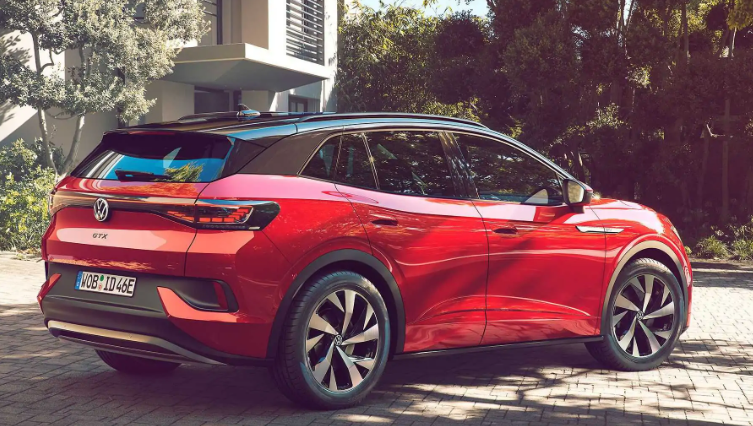Volkswagen is radically altering its plans for the upcoming ID.2, giving the entry-level electric model an all-new exterior and interior design that is slated to be tentatively shown in a concept car in March.
Set to go on sale in select global markets in 2025 at a target price of $24,000, the compact 5-seater will receive VW’s iconic Golf name, according to experts at the automaker’s Wolfsburg headquarters in Germany They also hint that a GTi performance variant has been discussed during recent strategy meetings for the new model.
The ID.2 will be the first VW to be based on the MEB-Plus platform – an updated version of today’s widely used MEB electric vehicle architecture that includes new prismatic LFP (Lithium Iron Phosphate) cells and speeds of load between 175 kW and 200 kW, among other novelties.
Instead of the controversial crossover design unveiled by the ID.Life concept at the 2020 Munich Motor Show, the much-revised ID.2 will receive a more conventional hatchback shape developed by a team of designers led by the new head of VW design, Andreas Mindt.
The move comes after new VW brand CEO Thomas Schäfer rejected the ID.2’s original crossover design, which is attributed to Mindt’s predecessor Jozef Kaban.
After months of internal debate over the design of the next price-leading BEV, Kaban has accepted a new position at the VW brand’s design operations as creative art director.
The decision to redesign the ID.2 comes after VW sister company Cupra revealed its uniquely styled version of the new model, the Urban Rebel. (pictured below)hatchback shaped.

The two models will be jointly produced at Cupra parent SEAT’s Martorell factory near Barcelona, Spain, as indirect replacements for the Volkswagen e-Up and SEAT Mii. A third model from VW’s Skoda brand is expected later.
A VW source familiar with early proposals for the redesigned ID.2 says it sits halfway between the existing internal combustion engine Polo and Golf in terms of exterior dimensions with a length of “around 4,250mm ” or 167.3 inches.
With a relatively short hood and a flat floor, it’s claimed to offer “the kind of interior space typically found in models a segment higher.”
VW insiders suggest that the new model will have strong links with the fourth-generation Golf.
“We have a great tradition and product strength in this segment,” says one. “It is not a completely new beginning, but a logical continuation of what Volkswagen has excelled in the past, albeit with an electric motor.”
Initially, the ID.2 is expected to be offered only in single-engine, front-wheel-drive form. However, the MEB-Plus platform will eventually support dual-engine and all-wheel drive models.
Schäfer first hinted at VW’s plans to use the Golf name for the production version of the ID.2 in October at the Los Angeles auto show.
He then said: “The Golf name has great value. The recognition it gets in the clinics (customers), people really understand what we’re talking about. So changing the name to something completely different doesn’t make sense.” .
Initial suggestions were that the Golf name could be reserved for a facelifted version of the ID.3. However, this is denied by VW sources, who say that “the Golf’s true values are to be found in a car the size of the ID.2”.
If you keep your ID. the identification of other electric VW models remains to be seen. One possibility Wards mentioned is the name ID.Golf.
In another significant move, Schäfer is said to have given the go-ahead for the return of the GTi badge to VW’s electric models. It is planned to replace the GTX model name first introduced in the ID.4 (pictured below) in 2020.

“The GTX is dead,” reveals a senior source. “The decision to replace it with the traditional GTi name has already been made, and is being considered for the ID.2.”
The combination of front-wheel drive and the GTi name dates back to the original Golf GTi introduced in 1976. A final decision has not yet been made on whether it will be applied to the production version of the ID.2.
Cupra’s unveiling of the Urban Rebel in June 2022 provides strong clues as to the approach VW could take with the electric Golf GTi.
Equipped with a front-mounted electric motor, the most powerful version of the upcoming Cupra model offers 222 hp and a 0-62 mph (100 km/h) time of 6.9 seconds.
By comparison, the current internal-combustion Golf GTi has a turbocharged 2.0-litre 4-cylinder petrol. with 245 hp for an official 0-62 mph time of 6.2 seconds.
Along with the exterior of the new hatchback, the reborn ID. 2 adopts a new-look interior that seats five in a cabin that is said to offer similar space to the current internal combustion Golf based on the MQB platform.
Additional changes center around the MIB infotainment system. They include VW’s first rotary controller, a feature initially appearing in the third-generation Tiguan due later this year, Wards can confirm.
The rotary controller located on the center console is designed to complement the touchscreen controls on current VW models. It is seen replacing the sliding mechanism introduced in the ID.3 in 2020.
The radical changes made to the ID.2 are part of a “complete reset” of the VW brand and its ID. electric vehicle strategy under Schäfer.
“With the changes taking place, we want to return to a position of strength with new cars that reflect traditional Volkswagen qualities and with names that will be familiar to long-time customers and other new car buyers,” said a source in Wards.


